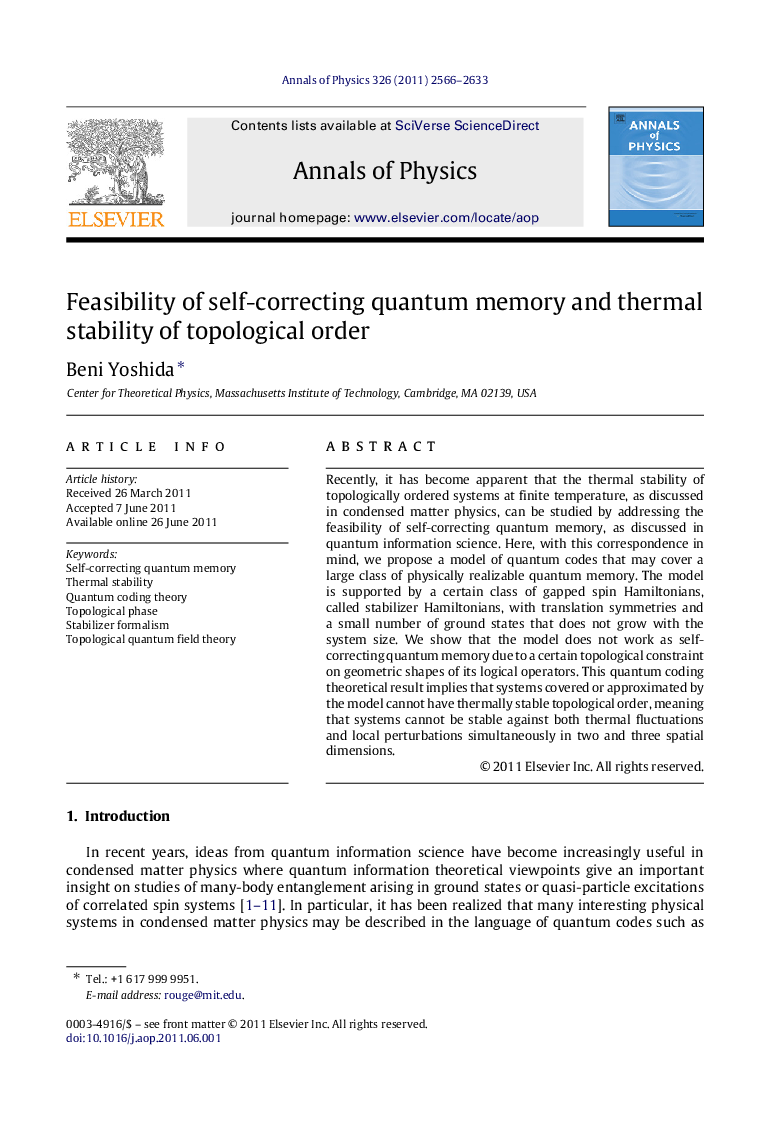| Article ID | Journal | Published Year | Pages | File Type |
|---|---|---|---|---|
| 1854863 | Annals of Physics | 2011 | 68 Pages |
Recently, it has become apparent that the thermal stability of topologically ordered systems at finite temperature, as discussed in condensed matter physics, can be studied by addressing the feasibility of self-correcting quantum memory, as discussed in quantum information science. Here, with this correspondence in mind, we propose a model of quantum codes that may cover a large class of physically realizable quantum memory. The model is supported by a certain class of gapped spin Hamiltonians, called stabilizer Hamiltonians, with translation symmetries and a small number of ground states that does not grow with the system size. We show that the model does not work as self-correcting quantum memory due to a certain topological constraint on geometric shapes of its logical operators. This quantum coding theoretical result implies that systems covered or approximated by the model cannot have thermally stable topological order, meaning that systems cannot be stable against both thermal fluctuations and local perturbations simultaneously in two and three spatial dimensions.
► We define a class of physically realizable quantum codes. ► We determine their coding and physical properties completely. ► We establish the connection between topological order and self-correcting memory. ► We find they do not work as self-correcting quantum memory. ► We find they do not have thermally stable topological order.
